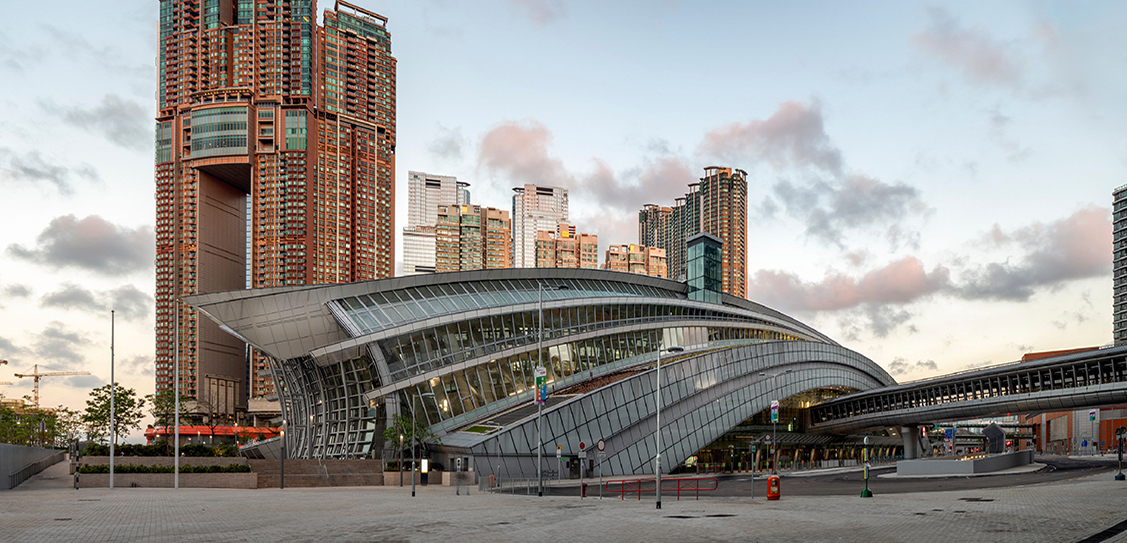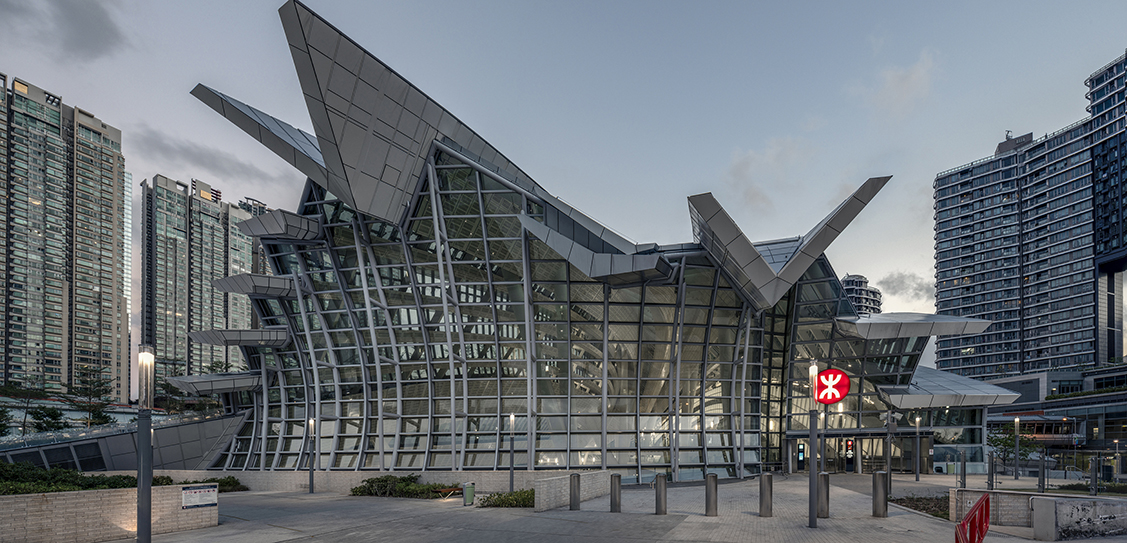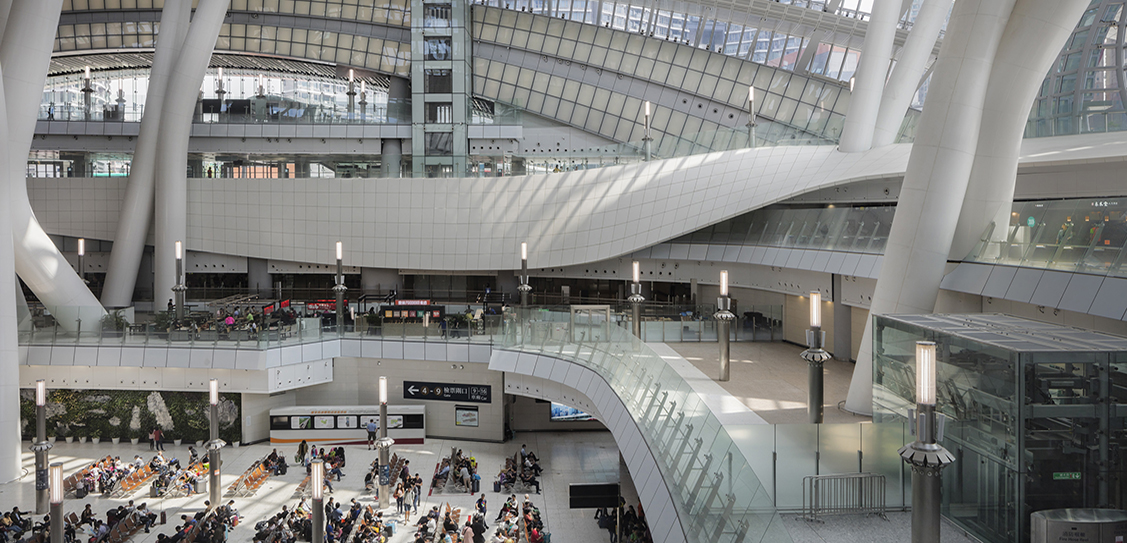Hong Kong West Kowloon Station has been awarded Best Public Building Project at LEAF Awards 2019 as well as being shortlisted for Best Achievement in Environmental Performance Project.
Hong Kong West Kowloon Station, designed by Andrew Bromberg, is one of the largest below-grade rail terminuses in the world. It sits adjacent to Victoria Harbour and serves as a gateway to Hong Kong and as a terminus to the high speed rail network of Mainland China. The inspiration for the design came from the converging forces on Hong Kong such as wind, traffic, tracks and pedestrian flows coming into the station. Many of the details were given to the architectural layering and orientation, such as the station entrance being placed in the south-west corner that provides more frontage and value to the commercial areas. This gives it better views of the harbour and eases access, making efficient use of the land and floor area resources and adapting to the urban reality of Hong Kong.
Andrew uses his design to maximise civic gestures both internally and externally. The main interior is 180m long with an average width of 65m and a maximum height of 45m, as well as a huge 20m-below ground central void at the heart of the station. Large tree-like column-bundles are used to support the roof that lift up the 4,000 panes of glass. This design effectively fills the station with light and allows millions of passengers to catch a glimpse of the city towers from the lower levels of the station. The walkable roof top that features hundreds of shrubs and trees native to Hong Kong creates six hectares of accessible open space in the densest urban realm in the world. It has become an integral part of Hong Kong and has profoundly transformed how people in the city interact.



